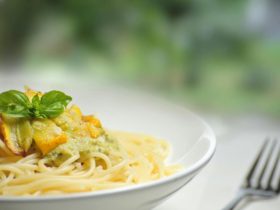This year, Czech beekeepers harvested their first batch of honey a month earlier than usual. Initially, the year seemed to be off to a bad start as a warm, short winter accelerated the blossoming of nectar-rich plants. However, a cold April came to the rescue, ensuring beekeepers and distributors could maintain the same price levels as last year, even if it was barely profitable for them.
The cold weather eventually slowed down flowering, giving the bee colonies time to develop experienced foraging bees that bring nectar to the hive. “It looked like everything would blossom, but about two weeks of bad weather came when bees couldn’t fly out of the hives. Paradoxically, this helped the bee colonies to catch up on the time delay,” says František Krejčí, Secretary of the Czech Beekeepers’ Association.
Most beekeepers are satisfied with the first honey harvest. However, the sale of honey is stagnating, and the prices do not correspond to the costs and labour invested. Buyers offer low prices, roughly 80 to 100 crowns per kilo. As a result, some beekeepers, particularly the smaller and medium ones, have to lower the numbers of their bee colonies or quit entirely, particularly the smaller and medium ones, from whom people in municipalities are used to buying honey directly.
The situation is further complicated by imports from abroad. When the harvest is smaller, and beekeepers hope to slightly increase the price, honey arrives from Slovakia or Ukraine. Therefore, A large harvest doesn’t mean beekeepers have won, and their year won’t be a loss.
Milan Špaček from Medokomerc explains why surplus honey isn’t sold abroad. “The purchase price of Czech honey is so high that it cannot be exported, and all Czech honey must be consumed in the Czech Republic. We pay beekeepers 80 for flower honey, 110 for mixed honey, and 140 for honeydew. For this price, however, we can only buy as much honey as we can sell as packaged Czech honey in the retail network,” he says.






